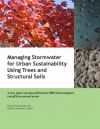Wetland Conservation in a Watershed Health Context: “Watershed Blueprints will help municipalities integrate and better deliver on regulatory requirements,” says Kim Stephens

“A watershed blueprint helps to create a picture of how to achieve a desired future condition. If communities reduce their ‘water footprint’, and if local government actions ensure the integrity of groundwater flow, they can then protect watershed and stream health. This is a reason for conserving wetlands,” stated Kim Stephens.










